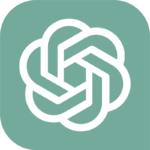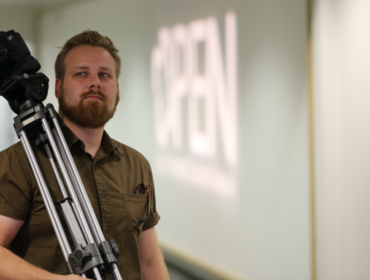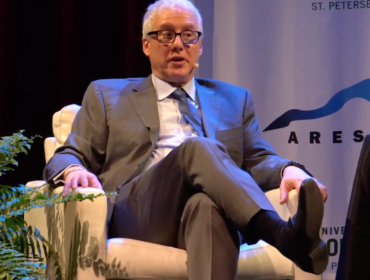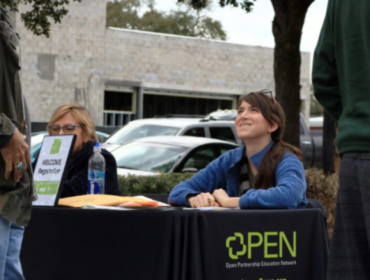
What Chat GPT Says about “Open Source” Community Learning
As many who contributed to the OPEN program in its earliest days know, the vision of learnOPEN was to apply the philosophy of open source thinking to the way we connect, learn, and grow as a community. Armed with little more than a video describing learning partnerships as intersections, we set off in 2017 to create a roundabout. The rest is a history yet to be written. The only question now is whether humans or bots will write that history.
So what might “open source community learning” look like? Well, from 2017-2020 we got a glimpse into this through OPEN experiences, as well as other projects that brought together leaders across sectors to dream, act, and co-create as a “think cooperative”. While these were prototypes built on a fuzzy vision and a v.1 platform, the potential and impact was felt. But is there really a connection between open source thinking and community learning? And if so, what does that look like? The humans have spoken; it is time for the bots to weigh in. We asked Chat GPT if we were on the right track.
What Chat GPT says
Open source principles are based on the idea of making the source code of a software project publicly available so that anyone can view, modify, and distribute it. These principles can also be applied to community learning, which refers to a collaborative and decentralized approach to learning where individuals and groups learn from each other through the sharing of knowledge and resources.
Here are some ways in which open source principles can apply to community learning:
- Transparency: In open source software, the source code is available for everyone to see and review. Similarly, in community learning, transparency can help learners understand the learning process and the resources being used. This can be achieved by openly sharing learning goals, objectives, and progress, as well as providing access to learning materials, assessments, and feedback.
- Collaboration: Open source software projects are often developed by a community of contributors who work together to improve the software. Similarly, community learning can be a collaborative effort where learners work together to share knowledge and resources, as well as provide feedback and support to each other. This can be facilitated through online communities, social networks, and other collaborative platforms.
- Flexibility: Open source software is often modular and flexible, allowing users to customize it to meet their specific needs. Community learning can also be flexible, allowing learners to tailor their learning experiences to their individual needs and preferences. This can be achieved by offering multiple learning pathways, providing personalized learning resources, and supporting different learning styles and preferences.
- Access: Open source software is often free and accessible to anyone with an internet connection. Similarly, community learning can be accessible to anyone regardless of their background, location, or financial resources. This can be achieved by using open educational resources (OER), providing free access to learning materials and resources, and offering flexible and affordable learning opportunities.
- Continuous improvement: Open source software is constantly evolving and improving through feedback and contributions from the community. Similarly, community learning can be a continuous process of improvement and innovation, where learners and educators work together to improve the learning experience and outcomes. This can be achieved by encouraging feedback and participation, supporting ongoing professional development, and adopting new technologies and best practices.
How OPEN Achieved this
- Transparency: In OPEN, all events and projects were developed on the OPEN wiki. The OPEN Wiki allowed any member of the community to join a project, such as an event or workgroup; it allowed members to see and contribute to work and a repository of files; and it provided version histories of all documents and projects. At its peak there were over 700 community members in the OPEN Wiki.
- Collaboration: All OPEN projects and events were community-led and driven. Any member of the community could propose a project and utilize resources, as feasible, to move ideas forward. All OPEN events and media are co-produced between various agencies.
- Flexibility: OPEN events and learning opportunities were deliberately outside of the box, flexible, and designed to be iterated upon. For example, an event may begin with one or two partners, then grow to incorporate multiple members of the community.
- Access: OPEN partnered with large-scale conferences and festivals while also hosting smaller-scale micro events with tiny nonprofits.
- Continuous improvement: To chronicle OPEN published a whitepaper in 2022. v1.1 will be published in 2023.
Related Post
OPEN Program emerges from the University...
Following a period of partnership growth, transition, and hibernation due to COVID-19, the Open Partnership Education Network (OPEN) will em...
NPR’s Marketplace host David Brancaccio talks...
Aresty Speaker, David Brancaccio, acclaimed reporter, author, speaker and storyteller indulged audience members with his wit, humor and cand...
Coding the Community: A City’s Proposed...
This article is authored by City Planner Robyn Keefe. The opinions expressed herein are the views of the author and do not necessarily repre...






Leave us a comment